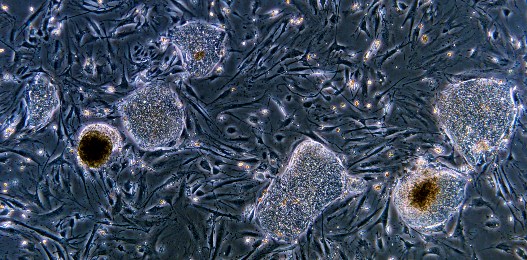Stem Cell Research Branches Out to New Horizons (Irish Times)
As research uncovers the complexities of engineered stem cells, it turns out they could be more useful for studying disease than directly treating it, writes CLAIRE O'CONNELL in today's edition of the Irish Times.
Few areas of scientific research invoke as much hope or hype as stem cells. The concept of using “master cells” to heal or replace damaged tissues is a seductive one, but it’s by no means straightforward, and recent discoveries are changing expectations.
There are three main types of stem cell, embryonic, adult and induced, explains Prof Frank Barry, who directs the National Centre for Biomedical Engineering Science at NUI Galway and is a principal investigator at the Regenerative Medicine Institute (Remedi).
Embryonic stem cells are derived from an early stage in development called the blastocyst, so ethical issues abound. The attraction is that they are “pluripotent”, so they have the potential to develop into several cell types in the body.
But Barry notes that the clinical proof just isn’t there yet as how useful embryonic stem cells could be.
“My own perspective on this is that the clinical evaluation of embryonic stem cells hasn’t yet happened and we have no data at all as to whether they will be effective or not in treating any human disease,” he says.
Another type of stem cell – the so-called “adult” stem cell – incurs fewer ethical problems because it is taken from from tissue after birth. But it may not have the same potential for forming different cell types as its embryonic cousins. “Clinically, there’s a much larger body of data about the use of adult stem cells, with the bone marrow probably being the most important, when a patient has a bone marrow transplant that’s essentially a stem cell therapy,” says Barry.
In 2006, another stem cell type entered the fray: the induced pluripotent stem (iPS) cell. To make these, scientists take an adult cell – maybe from the skin – and reboot it.
“You send the cell backwards to a primitive state where it thinks it is a stem cell again and then you can send it in all sorts of different directions,” explains Barry.
On paper, this seems like the perfect approach: take some easily-accessed cells from a patient, reprogramme them to become iPS cells, direct them to become whatever type of cell you need and then introduce them back in and they won’t be rejected.
But a recent finding threw something of a spanner in the works: iPS cells retain a kind of memory of their past life.
“Basically, while the cells are reprogrammed, their epigenetic memory remains that of the original cells, and essentially they have characteristics of an aged genome,” explains Barry, who was not involved in that research. (Epigenetic memory is the ability to transfer information through successive generations without modification of the DNA sequence.)
A separate study out earlier this year drove another nail into the coffin, when iPS cells triggered an immune response in mice.
So with iPS cells looking less rosy for treating disease in humans, has the air totally gone out of that balloon?
“I’m not at all certain that iPS cells will ever make it as a therapeutic product and I think a lot of people would have that view,” says Barry, whose own work on arthritic disease uses adult and iPS cells.
“But the value of all this might be as a research tool to understand development and disease. You could try to replicate a disease so you could understand the mechanism and potentially look for different therapeutic solutions.”
The romance is over with iPS cells as a form of direct therapy, agrees Dr Stephen Sullivan, director and chief scientific officer of the Irish Stem Cell Foundation.
“The iPS cells’ future in direct cell replacement therapies is not as bright as some initially expected, but iPS cells, alongside embryonic stem cells, will still be useful for disease modelling and drug screening,” he says.
One project ongoing in Ireland is taking skin cells from consenting patients with motor neurone disease and Parkinson’s disease and reprogramming them to become iPS cells. From there, the scientists can direct these former skin cells to become brain cells, and so create a disease model in a dish.
“The plan is to expand to other patient groups such as depression, schizophrenia and Alzheimer’s, and build up a bank of iPS cells that can be used by our colleagues in Ireland and abroad for their research,” says Dr Gavin Davey, a senior lecturer in neurosciences at Trinity College Dublin, who is carrying out the research with Prof Orla Hardiman at Trinity College and Beaumont Hospital.
“Hopefully, this will lead to quicker identification of biochemical pathways that take a wrong turn in these disorders,” he says. “The hope here is that we find neuroprotective drugs faster than the traditional route of animal studies.”

